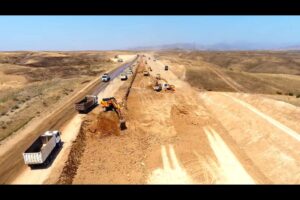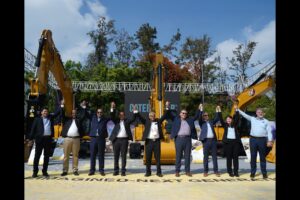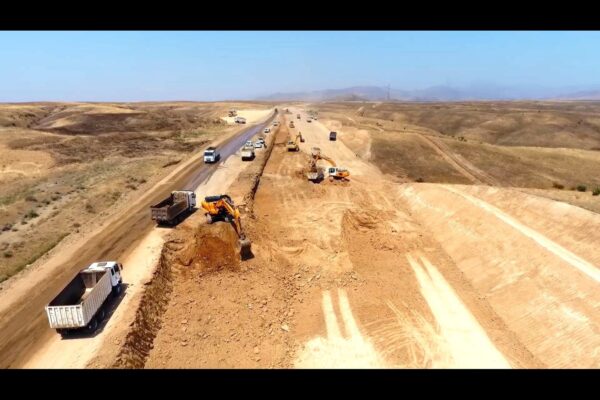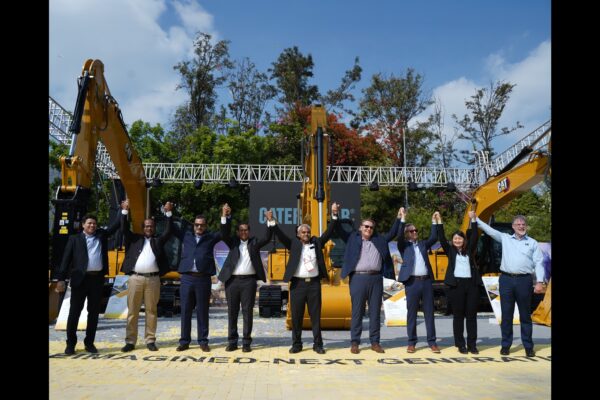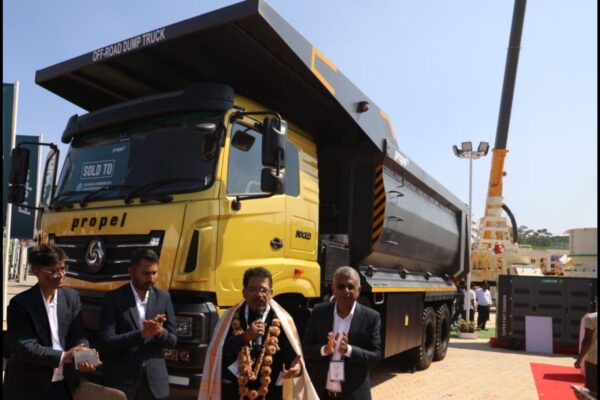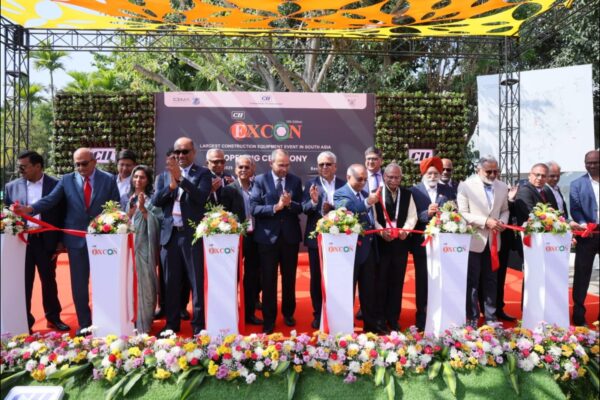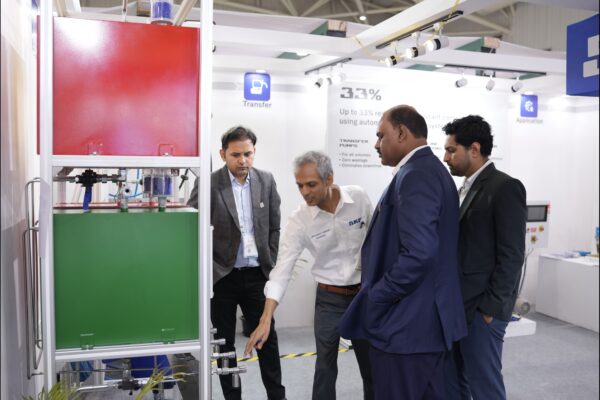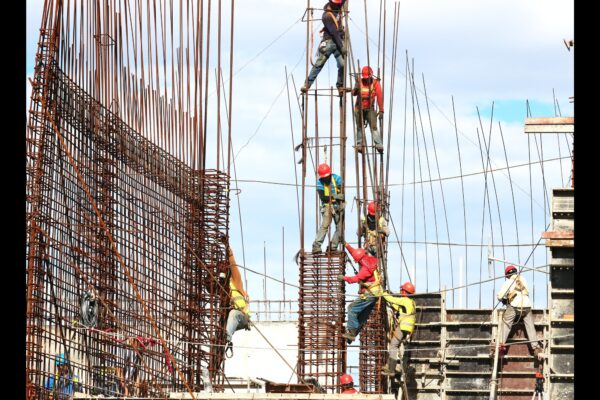Interview: Trimble Connect facilitates cloud-based collaboration, says Harsh Pareek, Senior Director, Regional Sales, Trimble Solutions India
How do your digital construction management solutions contribute to the ongoing transformation of the real estate and infrastructure sectors?
In an industry where a single misstep can derail timelines or inflate costs, the ability to make smarter, faster decisions isn’t just a competitive advantage; it’s essential. That’s where Trimble’s connected construction solutions are transforming the real estate and infrastructure sectors. By integrating design, planning, procurement, and execution into one unified ecosystem, Trimble brings every stakeholder onto the same page. This real-time visibility eliminates data silos, reduces miscommunication, and drives smarter decision-making across the entire project lifecycle. Trimble’s digital construction management platform leverages innovations such as digital twins, cloud collaboration, IoT, and AI-driven analytics to empower teams to move beyond simply reacting to problems – they can now anticipate and prevent them. Digital twin technology enables teams to simulate and stress-test infrastructure performance before a single machine arrives onsite, identifying potential issues early and refining designs for optimal outcomes. Meanwhile, machine learning and automation streamline repetitive tasks, enhance safety protocols, and enable precision at scale, ensuring projects are delivered on time and within budget. The result is a new standard for project delivery: infrastructure and real estate developments that are completed faster, safer, and with greater long-term value. With Trimble, customers gain not only increased efficiency and profitability but also the confidence that their projects are future-ready and built to the highest standards of quality and sustainability.
What key challenges in the construction lifecycle do your software products aim to solve?
Construction projects are inherently complex, involving many stakeholders, shifting timelines, and large investments. Yet, issues like budget overruns, delays in schedules, and poor communication are frequently exacerbated by disjointed systems and a lack of real-time insight. Modern construction software addresses this by centralizing critical project information – such as designs, budgets, RFIs, and schedules – ensuring that all stakeholders have access to consistent, real-time data. This enhanced visibility facilitates improved collaboration and enables more timely, informed decision-making. With Trimble’s digital construction management tools, these problems are addressed head-on. By consolidating scheduling, document control, budgeting, and resource planning onto a single, integrated platform, Trimble facilitates team productivity and decision-making. Additionally, leveraging technologies like Building Information Modelling (BIM), digital twins, and AI-driven analytics allows teams to proactively detect and resolve issues before they impact project timelines. Automation of routine administrative tasks further reduces the potential for human error and increases operational efficiency. Collectively, these solutions streamline workflows, enhance coordination across teams, and contribute significantly to delivering projects on schedule and within budget.
What are the core features of your platform, such as scheduling, budgeting, resource planning, and document control, that set it apart from others in the market?
Crucial tasks like scheduling, budgeting, resource planning, and document control are all integrated into a single, interconnected digital ecosystem, which makes Trimble’s construction management platform unique. Through this integration, teams can see every step of the project lifecycle from design to execution in real time. Trimble Connect facilitates cloud-based collaboration by providing access to documents, models, and version control. Projects are kept on schedule, and resource usage is optimised through advanced scheduling. Using digital twin technology, BIM, and 3D modelling through Tekla Structures, Trimble helps with precise planning, conflict-free design, and real-time asset monitoring. When combined, these characteristics decrease risk, foster better teamwork, and promote more intelligent, effective project completion.
How do your digital tools support both on-site execution and centralised project oversight?
Trimble’s digital solutions are designed to bridge the gap between on-site execution and centralised project oversight by creating a connected, collaborative ecosystem. Trimble’s digital solutions improve control and collaboration during construction projects by connecting project offices with job sites. Tools like Trimble SiteVision help teams identify problems early and minimise rework on-site by superimposing 3D models onto actual environments using augmented reality. Planning and execution of bridge projects are streamlined through Bridge Information Modelling (BrIM). One the other hand, with Trimble Construction One, project teams can access real-time data, manage documents, track progress, and coordinate resources from any location – whether in the field or at the office. Field teams benefit from mobile access to up-to-date drawings, RFIs, and checklists, enabling them to execute tasks efficiently and communicate changes instantly. Meanwhile, centralised oversight is supported through comprehensive dashboards and automated workflows that provide project managers with clear visibility into schedules, budgets, and quality metrics across all projects.
How does your software integrate with other technologies such as BIM, AI, IoT, or digital twin platforms?
Contemporary construction software platforms are engineered to integrate seamlessly with advanced technologies such as BIM, AI, IoT and digital twin platforms, thereby fostering a connected and intelligent project environment. Through open APIs and standardised data protocols, these platforms enable real-time exchange of 3D models, project data, and design updates, enhancing visualisation and early detection of design conflicts. AI analyses data from BIM and IoT to provide predictive analytics, automate clash detection, and optimise scheduling and resource allocation, improving efficiency and risk management. IoT sensors deliver real-time insights on equipment, environmental conditions, and workforce safety, which are visualised within BIM models for proactive site management. Digital twin integration offers a dynamic digital replica of the physical asset, supporting ongoing simulation, performance monitoring, and predictive maintenance throughout the asset lifecycle. Together, these integrations empower construction teams to make informed decisions, improve collaboration, and deliver projects more efficiently and sustainably.
Do your solutions offer compatibility with ERP systems or other PropTech tools commonly used by real estate developers and contractors?
Yes, Trimble’s solutions, especially Tekla Structures 2024, offer strong compatibility with ERP systems and PropTech tools widely used by real estate developers and contractors. Tekla Structures focuses on interoperability with support for open standards like IFC (Industry Foundation Classes) and BCF (BIM Collaboration Format), enabling seamless data exchange between structural models and enterprise systems, resulting in real-time synchronisation of project management, accounting, procurement, and financial data. This connectivity ensures that critical information, such as budgets, cost codes, change orders, and financial reports, is consistently accurate and readily accessible, reducing manual data entry and minimising errors. Furthermore, the platform supports integration with other PropTech applications, including BIM and digital collaboration tools, to streamline workflows and enhance operational efficiency. By breaking down information silos and improving reporting capabilities, these integrations provide comprehensive end-to-end project management. This interconnected approach empowers teams to make well-informed decisions and deliver projects more efficiently, helping organisations maintain a competitive advantage in today’s evolving real estate and construction industries.
What are the common barriers to adoption you encounter among traditional construction firms, and how do you address them?
Adopting new technology can be challenging for traditional construction firms, and we often witness a few common barriers. Resistance to change is a significant hurdle, as many teams are comfortable with long-standing manual processes and may be wary of moving to digital solutions. This is often accompanied by concerns about the complexity of new systems and the time required to learn them. Financial considerations, such as upfront costs and uncertainty about the return on investment, can also make firms hesitant, particularly smaller organisations with tighter budgets. Additionally, the shift from paper-based workflows to integrated digital platforms can seem overwhelming, especially when existing processes are deeply ingrained. Technology is viewed by many businesses as a significant upfront investment. Trimble provides a flexible subscription model that enables businesses to pay according to project scale and usage in order to address this. This makes it simpler for businesses of all sizes to get started by lowering startup costs and doing away with the need for significant capital expenditures. Skill gaps are another major concern, as some team members may not be comfortable using digital tools. We support these users through intuitive design, guided onboarding, and extensive training materials. Our customer support teams are also available to assist at every stage, helping ensure a smooth and confident transition to the platform. In addition to this, the Tekla 2025 version introduces the new Trimble Assistant – an AI-powered tool built to support users across Tekla Structures, Structural Designer, Tedds, and PowerFab. Available as an in-product extension and on the Tekla User Assistance web platform, it gives quick, accurate answers by tapping into Trimble’s extensive support knowledge base. Furthermore, Trimble focuses on providing comprehensive training and ongoing support to facilitate a smooth transition. Demonstrating clear, practical benefits – such as improved efficiency, reduced errors, and faster decision-making – helps build confidence in the new technology. By initiating pilot projects and involving key stakeholders early in the process, firms can secure buy-in and illustrate how digital solutions integrate with existing workflows. This collaborative, step-by-step strategy enables firms to adopt technology at a comfortable pace, minimising disruption while maximising long-term value.
How do your products support sustainable construction practices, including waste management and help clients meet ESG and compliance standards?
Trimble’s products help customers meet ESG and compliance standards while increasing productivity and decreasing waste, all of which contribute to sustainable construction. Real-time team collaboration is made possible by digital tools like Tekla, Trimble Connect, and ProjectSight, which increase planning precision and decrease rework. This reduces carbon emissions, energy consumption, and material waste for the building process. From design to operations, Trimble improves resource allocation and makes it possible to use materials more efficiently by offering data-rich models and integrated workflows. As seen, Tekla Structures greatly reduces errors and offcuts by enabling precise detailing and fabrication. By enabling accurate on-site execution, Trimble’s 3D laser scanning and machine control technologies help reduce overbuilding and unnecessary transportation. In order to help clients monitor sustainability metrics and adhere to industry rules and ESG objectives, Trimble’s tools facilitate transparent reporting and documentation. All things considered, Trimble enables construction stakeholders to build more efficiently, more quickly, and more sustainably, resulting in favourable business and environmental outcomes.
How do you see construction management evolving in the next 3–5 years, particularly with the rise of smart buildings and modular development?
The future of construction management is set to transform dramatically over the next 3–5 years, driven by the rise of smart buildings and modular development. As projects become more complex and tech-driven, data, real-time collaboration, and digital coordination will be essential for success. Smart buildings will require integrated lifecycle planning and seamless teamwork, with platforms like Trimble Connect ensuring smooth installation and maintenance of advanced systems. Meanwhile, modular construction’s growth will demand tighter coordination between off-site manufacturing and on-site assembly, relying heavily on digital tools to manage logistics and quality. Overall, construction management will become faster, more precise, and better connected, helping the industry meet sustainability, cost, and performance goals in an increasingly complex built environment.
Tags
Related Posts


